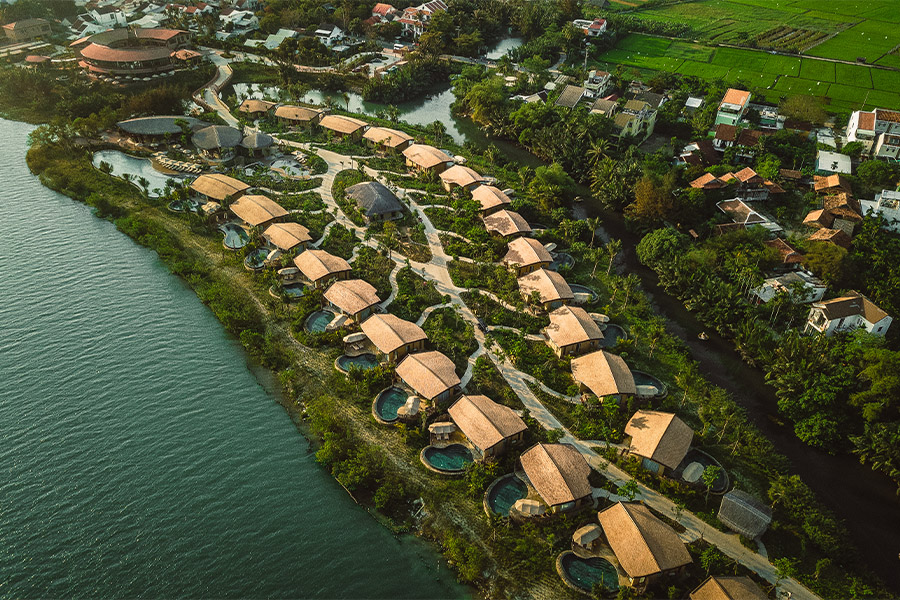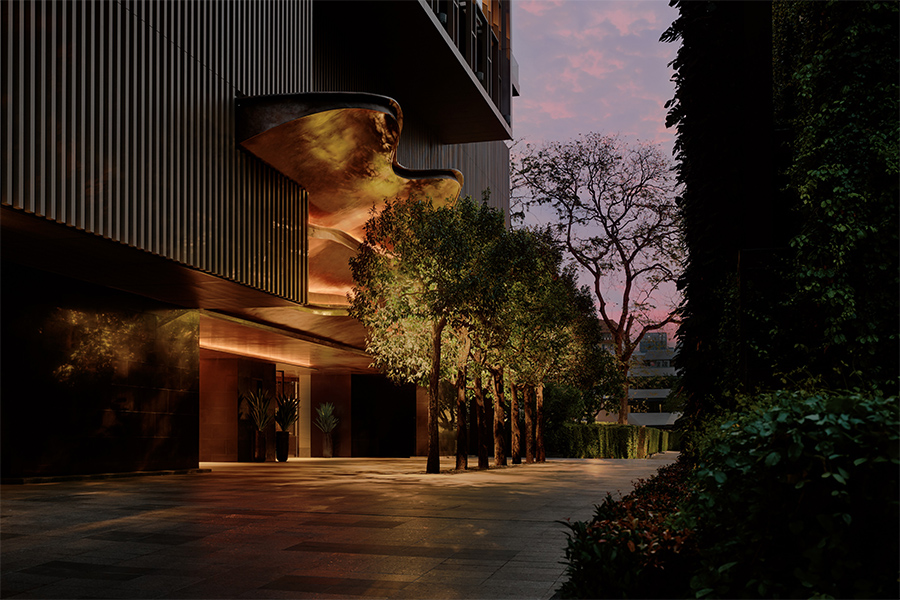Originally built between 1865 and 1871, the four palaces making up the Ritz-Carlton Vienna were used primarily by Viennese nobility and the bourgeoisie. In creating the hotel, the formerly independent buildings were merged into one. “[These] create interesting connection points, which the guest can immediately identify due to the changes in floor and ceiling levels,” says Peter Silling of German-based Peter Silling & Associates, which led the design of the project. “Vienna remains an inexhaustible source of inspiration for artists of all kinds. The interaction of old and new creates a unique look and invites the guest to explore the hotel and its intricacies.”

The resulting building’s locale on the Vienna Ringstrasse provided a perfect source of inspiration, where the boulevard’s rings, foliage, and equine tradition reappear in the interior. “On the inner ring road, the bourgeoisie reside and wondering around in stately carriages or on horseback,” explains Silling. “This historical past is reflected in the modern design language and referenced in the artwork and other design features.” For instance, the paintings in the lobby and Distrikt restaurant’s undulating feature ceiling recall the nearby Spanish Riding School as well as the ring road.

With a natural color palette, bronze-colored fluted columns, and large paintings of horses, the lobby ties in the road’s trees and the local park with a contemporary twist. “This enables the guest to get a first impression of the design of the hotel, which ranges from colorful historical stairways to the state-of-the-art crystal hall,” says Silling.

True to its name, the Crystal ballroom glimmers with five tons of crystal on two glazed walls, which stand at either end of the room. The other walls are adorned with a stretched silk covering. “This unique opulence is a playful hint to the past, to an era when ball gowns and diamond necklaces were a daily occurrence,” says Silling.

This lavishness extends to the guestrooms, where original, floor-to-ceiling paintings mix with walnut finished walls and white marble bathrooms⠯⠯and in some rooms, a mezzanine. “These imposing double height spaces with large windows provide an impressive view of the palaces,” comments Silling.

Among these luxurious rooms is the Presidential suite. With the craftsmanship of the listed areas, the wall paneling and ceiling frescoes evoke the luxury of the previous palace. “The suite showcases the overall design concept for the hotela harmonious interplay of old and new, just like the Viennese Waltz, lively and full of energy and elegance,” says Silling. The frescoes and carvings are framed with subtle modern design classics for a contemporary touch. “The result speaks for itself⠯⠯a classical historic ambiance with a state-of-the-art fit out,” Silling adds.

The hotel’s history emerges again with the gold and green-toned wool rugs and champagne-colored fabrics of the lobby lounge, Melounge. A handpainted fresco with gilded ornamental patterns adorns the ceiling above. “The different areas have their own signature design,” says Silling. The 10zehn bar and the rooftop terrace contrast the historical influences with a low light atmosphere highlighted by red accents.

“The biggest challenge was to stay focused on the design and not to get sidetracked by the marvelous architectural details of the building,” says Silling. “Despite these challenges, the convincing result makes this project one of my favorites.”
.jpg)



